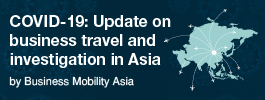Everland’s Prolman: “Private sector frustrated with government delays on tackling climate change”

The financing of REDD+ projects through voluntary carbon markets introduces alternative economic incentives for local communities to change behaviour and preserve the forests.
- Everland evaluates each project’s impacts in three areas: forest conservation, wildlife protection and community development
- When the projects prove they have successfully stopped deforestation, they generate Verified Emission Reductions (VERs), which are then sold to corporations including banks
- Seven REDD+ projects currently generate 14 million tonnes of emission reductions per annum, with 20 new projects in the pipeline with potential to deliver 25 million tonnes from 2023 onwards
Everland, the marketing spinoff of Wildlife Works, represents high-impact forest conservation projects in Africa, Asia and Latin America. The company is working to stop deforestation through the application of REDD+ (Reducing Emissions from Deforestation and Degradation), a United Nations (UN)-envisioned climate change mitigation strategy designed to protect forests that would otherwise be destroyed, thereby avoiding the release of carbon dioxide (CO2) emissions.
The projects generate Verified Emission Reductions (VERs) – otherwise known as carbon credits or offsets – which are then sold to corporations who voluntarily offset their unavoidable emissions.
Everland has expanded its portfolio to include the representation of seven REDD+ projects located in Kenya, Democratic Republic of the Congo, Peru, Borneo and Cambodia, which generate 14 million tonnes of VERs per year. With an established pipeline of 20 new projects – with potential to deliver 25 million tonnes of annual emission reductions from 2023 onwards – the company reached a sales revenue of over $29 million in 2019.
The marketing entity charges no markup, with the majority of proceeds from the sale of VERs flowing directly to forest conservation, wildlife protection and sustainable community development. It also has Exclusive Representation Agreements signed with Wildlife Works, Conservation International, The Wildlife Conservation Society, Infinite Earth and The Wildlife Alliance. Clients include large banking groups, insurance companies, airlines, asset managers, consumer facing, mining as well as oil and gas companies.
With economics the driver that destroys over 30 million acres of forests yearly around the globe, deforestation and forest degradation account for around 10% of CO2 emissions. NASA images dated as far back as the 80s are being used to check which areas have been deforested, and hence the rate of deforestation. The volume of carbon still locked in the trees can subsequently be calculated.
The amount of emission reductions (measured in tonnes of CO2 equivalent (tCO2e)) the projects get each year is 1/30th of the total deforestation that would have occurred otherwise at those rates over 30 years. Each tCO2e is a unit that Everland can sell.
Gerald Prolman (pictured left), the president of Everland, explains how trading in VERs through REDD+ projects offers wider value in addition to climate change mitigation. He also discusses measuring impact and how companies can voluntarily become more carbon neutral.
Chris Georgiou (CG): Could you please walk me through the process of how an interested corporation can engage in REDD+ projects through Everland?
Gerald Prolman (GP): Most of our clients have in-house sustainability departments. They typically do their own footprint analysis. If they don’t have in-house resources, we can recommend expert consultants. These companies also do all they can to reduce their emissions as their priority and then offset the remaining “unavoidable” emissions.
Everland helps its clients gain value from their support of REDD+ projects by delivering an additional layer of due diligence and project engagement, quarterly impact reporting aligned with United Nations Sustainable Development Goals (SDGs), specialised communications when and where needed and compelling marketing content. We also help our clients foster direct relationships with the projects and communities and assist them with their employee, customer and shareholder engagement.
CG: Are your clients generally part of a national carbon trading scheme?
GP: Our clients offset unavoidable emissions on a voluntary basis as they are committed to being good corporate citizens to do their part for the environment. Most of our projects are in jurisdictions that are poised to participate in national programmes where the VERs could qualify as compliance grade in the future as policy makers make further progress with their programmes under the Paris Climate Agreement.
Of note, REDD+ was named five times in the Paris Climate Agreement, indicating that a REDD+ carbon credit is to be on par with any other compliance grade carbon credit as of 2020. We have runaway climate change and the private sector is under increasing pressure to do something. They are frustrated with waiting years for government leaders to act in the best interest of the society.
CG: How does the price of carbon affect your business model across jurisdictions? What is the pricing mechanism Everland uses for your carbon credits in terms of the regularity and voluntary market as well as geographical spread?
GP: Each project has a clearly defined and transparent proceeds sharing model. The higher the price and volume sold, the more benefits that are delivered.
As REDD+ is a market-based climate solution, the price is what the market will bear. It is our job to convey the value, what is special about each of our projects. We price each projects VERs the same. Our REDD+ VERs represent a lot more than one tonne of CO2 avoided. We have set a high bar for project quality that is measured by the level of environmental, social and biodiversity benefits that each project delivers.
CG: In terms of data analysis and due diligence, can you tell me more about your quarterly impact reporting based on the SDGs? Which metrics do you use and how does the Sustainable Development Verified Impact Standard (SD VISta) help to ensure transparency?
GP: As part of our due diligence process, Everland evaluates each project’s impacts in three impact areas — forest conservation, wildlife protection and community development — and aligns each project’s impacts with the SDGs Metrics associated with these impacts that vary from project to project, depending on the specific activities emphasised on the ground. These can include income earned from eco-tourism activities, students receiving scholarships in a given time period or population counts of critically endangered species in a project area.
While each of our projects is verified to the Verified Carbon Standard and to at least one Gold Level of the Climate, Community, and Biodiversity standard, our projects are also adopting the new SD VISta standard as it is rolled out by Verra. This will enable our projects to make third-party audited claims about their impacts on the SDGs. SD VISta verification, along with Everland’s regular reporting process, ensures that there is transparency and full partnership between our projects and their supporters on the journey.
Everland works with our projects to consistently monitor, evaluate and report on each project’s impacts. We have dedicated field staff at each project with whom we engage on a regular basis, both to produce quarterly impact reports for clients and to receive frequent updates from the field.
CG: Has there been an occasion where Everland has failed to meet its agreed carbon reduction offsets? If so, what is the process if the carbon offset targets that clients pay for are not reached?
GP: None of the projects we represent have had reversals on the ground and have always achieved their target performance. But even if they did have reversals, the way the Verra VCS standard is set up is that it has an insurance buffer of credits earned by all projects in the system and not sold to ensure that all credits sold by any project can be considered permanent emission reductions. Because if there is a reversal in one project, the buffer replaces the credits for the client.
CG: In the Kasigau Corridor REDD+ project in Kenya for example, how do you engage with the 6,000 land-sharing holding groups? What type of leadership structure is there to keep them together and aligned with the project?
GP: Wildlife Works is the project developer, and they have established a world-class and often studied governance structure with the local community that ensures they are empowered to decide what money should be spent on but that ensures Wildlife Works controls the spending to ensure the money is used as they have decided and not diverted or misappropriated.
This is possible because Wildlife Works controls the sale of the credits in the marketplace and the flow of money into the community, so the funds never pass through the hands of the committees deciding on the priorities. This is by design of the committees themselves who understand that a frequent failing of other community-based projects is that the committees either misappropriate or squander the funds and projects never get completed. The Kasigau committees, by their own decision, follow a standard operating procedure they designed, requiring balanced participation from elders, youth, women and men in the committees themselves.
CG: Is there a danger of perverse incentives in which Everland is financially dependent on the very thing it is trying to defeat (i.e. carbon emissions)? So, while Everland and the projects you represent work to reduce the carbon emissions from deforestation, do you and developers like Wildlife Works have an interest in, and work towards, reducing other and all global carbon emissions?
GP: The reduced emissions story won’t solve climate change because the fact is that it is the concentration of the emissions in the atmosphere that is causing climate change. Those existing emissions stuck in the atmosphere will not disperse for over 100 years, so with every additional emission happening every nano-second, the existing problem becomes increasingly more impossible to solve.
We hope there would one day, and as soon as possible not be a need for our work. But unfortunately, this is not the reality. Each year, more than 35 million acres of forest burn, releasing more than seven billion tonnes of emissions. We are quite focused on supporting vital conservation projects that are doing all they can to protect highly threatened forests that would disappear without their interventions.
Wildlife Works is first and foremost a wildlife conservation company, and climate change is wreaking havoc on the environment and threatening critical species, so they are an enemy of climate change and an advocate of all approaches to stop it. However, the UN has rightly recognised that stopping deforestation of natural forests is perhaps the most important contribution we can make quickly to stopping climate change so conservation organisations like Wildlife Works have their hands full focusing on that challenge.
Photo credit: Filip Agoo









Leave your Comments